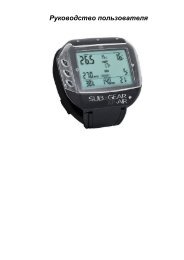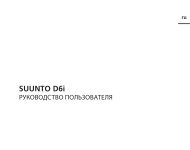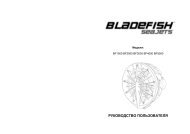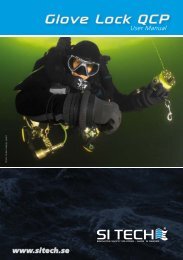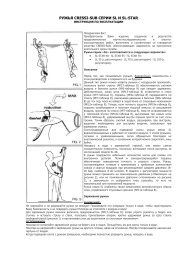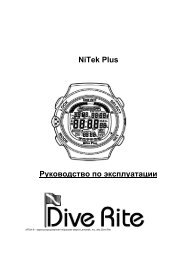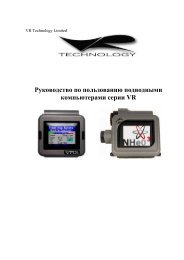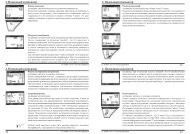Galileo SOL Manual - Scubapro
Galileo SOL Manual - Scubapro
Galileo SOL Manual - Scubapro
Create successful ePaper yourself
Turn your PDF publications into a flip-book with our unique Google optimized e-Paper software.
1. Introduction to <strong>Galileo</strong><br />
inside the cabin of an airplane could cause<br />
decompression sickness, as calculated by<br />
the decompression model in the computer.<br />
WARNING<br />
Flying while <strong>Galileo</strong> displays NO FLY can<br />
result in serious injury or death.<br />
The surface interval (SURF INT) is<br />
displayed from the moment the dive is<br />
closed (5 minutes after surfacing), for as<br />
long as there is remaining desaturation on<br />
the computer.<br />
In addition, the bar graphs at the sides<br />
of the screen show the CNS O 2 (left bar)<br />
and the residual nitrogen loading (right<br />
bar). Depending on the amount of residual<br />
nitrogen, <strong>Galileo</strong> shows the prohibited<br />
altitude classes via grey lines inside the<br />
stylized mountain (see section 3.6 for more<br />
information).<br />
1.4 Altitude alarm after<br />
a dive<br />
Going to altitude is in a way similar to starting<br />
an ascent from a dive: you expose your<br />
body to a lower partial pressure of nitrogen<br />
and consequently you start offgassing. After<br />
a dive, given the higher nitrogen loading<br />
in your body, even reaching an otherwise<br />
negligible altitude can potentially cause<br />
decompression sickness. Consequently,<br />
when in surface or sleep mode, <strong>Galileo</strong><br />
constantly monitors the ambient pressure<br />
and uses it to evaluate your nitrogen loading<br />
and offgassing. If <strong>Galileo</strong> notices a drop in<br />
ambient pressure not compatible with your<br />
current nitrogen loading, it will activate<br />
the alarm to alert you of the potentially<br />
dangerous situation.<br />
1.5 No-dive warning after<br />
a dive<br />
If <strong>Galileo</strong> detects a situation of increased<br />
risk (due to the potential of microbubble<br />
accumulation from previous dives or a<br />
CNS O 2 level above 40%), the symbol<br />
will appear on the display together with a<br />
suggested surface interval. This minimum<br />
surface interval is what <strong>Galileo</strong> predicts<br />
being necessary to reduce the number of<br />
microbubbles and/or to reduce the CNS O 2<br />
level below 40%.<br />
You should not undertake a dive as long<br />
as the no-dive warning is displayed on<br />
the computer screen. If the warning is<br />
prompted by microbubble accumulation<br />
(as opposed to CNS O 2 over 40%) and<br />
you dive anyway, you will have shorter nostop<br />
times or longer decompression times.<br />
Moreover, the duration of the microbubble<br />
warning at the end of the dive can increase<br />
considerably.<br />
1.6 SOS<br />
If you stay above a depth of 0.8m/3ft for<br />
more than 3 minutes without observing<br />
a prescribed decompression stop, the<br />
computer will switch into SOS mode. Once<br />
in SOS mode the computer will lock up<br />
and will be inoperable as a dive computer<br />
for 24 hours. If <strong>Galileo</strong> is used for diving<br />
within the 24 hours of an SOS lock, it will<br />
automatically switch to gauge mode and<br />
provide no decompression information.<br />
10



